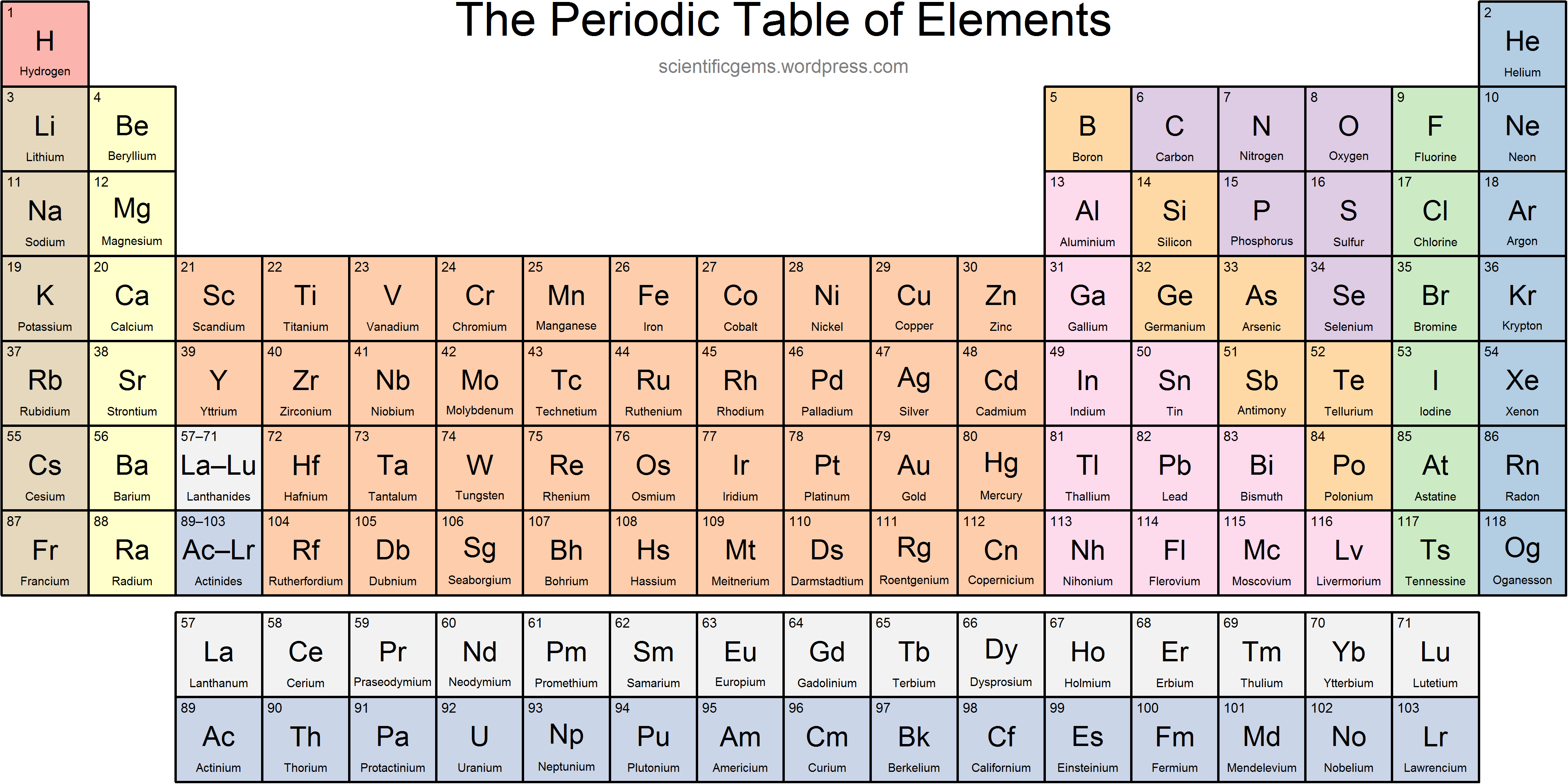

Mendeleev left spaces for elements he expected to be discovered, and today’s periodic table contains 118 elements, starting with hydrogen and ending with oganesson, a chemical element first synthesized in 2002 at the Joint Institute for Nuclear Research (JINR) in Dubna, Russia, by a team of Russian and American scientists. Its story is over 200 years old, and throughout its history, it has been a subject for debate, dispute and alteration.Īttempts to classify elements and group them in ways that explained their behavior date back to the 1700s, but the first actual periodic table is generally credited to Dmitri Ivanovich Mendeleev, a Russian chemist who in 1869 arranged 63 known elements according to their increasing atomic weight. Go into any scientist’s office or lecture hall anywhere in the world and you are likely to see one. Can you fill in the names of all ten categories of elements just by going by the symbols of elements in those categories? Which elements belong to which categories? Use colored markers to outline the elements and their categories in the same color.There is no more enduring reflection of science than the Periodic Table of Chemical Elements, which sheds light not only on the essence of chemistry but physics and biology as well. Hide element names and symbols and challenge students to complete the table. Just open the file in a PDF reader supporting layers and begin customizing! Show all layers for a complete view including groups, periods, legends, colored outlines, corners (for black and white printing), as well as the usual atomic number, weight, symbol, and name.

Printable Periodic Table PDF - Ptable Printable Periodic Table PDF


 0 kommentar(er)
0 kommentar(er)
